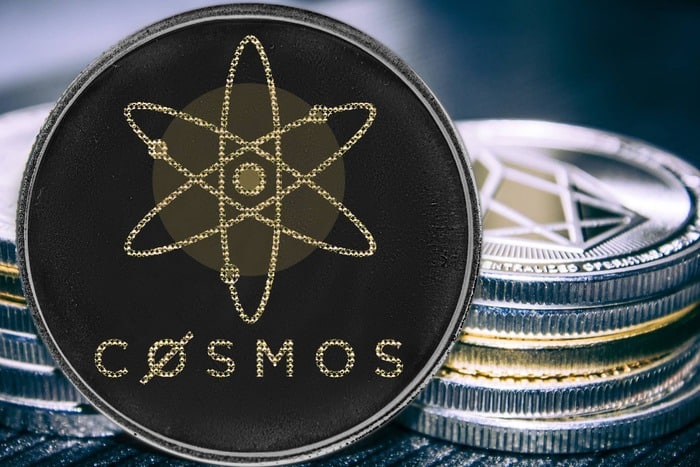Let’s take a deep dive into the transformative impact of ATOM on the world of cryptocurrencies. This expert article delves into ATOM’s impact on the crypto landscape and future growth and opportunities. It’s not only the crypto project that impacts the crypto landscape, innovations and advancement also play a part. If you’re looking for comprehensive insights and analysis on the ever-evolving cryptocurrency market, don’t miss out on exploring syntrocoin.com to stay informed and stay ahead.
ATOM’s Impact on the Crypto Landscape
The emergence of ATOM has had a significant impact on the crypto landscape, revolutionizing traditional financial systems and opening up new possibilities for decentralized finance (DeFi). By understanding ATOM’s role in the crypto space, we can gain insights into its potential to shape the future of finance.
One of the key aspects that sets ATOM apart is its interoperability. In the crypto world, interoperability refers to the ability of different blockchains to communicate and interact with each other seamlessly. ATOM achieves this through its innovative inter-blockchain communication protocol (IBC), which enables cross-chain transactions and data transfer. This interoperability is crucial for unlocking the full potential of cryptocurrencies and expanding their real-world applications.
ATOM’s interoperability has the potential to disrupt traditional financial systems. By enabling seamless transactions between different blockchains, ATOM reduces the need for intermediaries and streamlines cross-chain operations. This has implications for various sectors, including banking, supply chain management, and asset tokenization. It opens up opportunities for increased efficiency, reduced costs, and improved transparency in financial transactions.
Moreover, ATOM’s interoperability plays a significant role in decentralized finance (DeFi). DeFi refers to the use of blockchain and cryptocurrency technologies to recreate traditional financial systems without the need for intermediaries such as banks. ATOM’s ability to facilitate cross-chain transactions and data transfer allows for the creation of decentralized applications (dApps) that can interact with multiple blockchains simultaneously.
However, ATOM’s impact on the crypto landscape is not without challenges. As with any emerging technology, regulatory considerations and challenges need to be addressed. Governments and regulatory bodies are still grappling with how to effectively regulate cryptocurrencies and their associated technologies. ATOM’s ability to bridge different blockchains and facilitate cross-border transactions raises questions about compliance, security, and jurisdiction. Finding the right balance between innovation and regulation will be crucial for ATOM’s continued growth and acceptance.
Looking ahead, ATOM holds tremendous growth potential. Market trends and predictions indicate a positive outlook for ATOM’s value and adoption. Key partnerships and collaborations with other blockchain projects and industry players further strengthen ATOM’s position in the crypto landscape.
ATOM’s Future: Growth and Opportunities
One of the factors driving ATOM’s future growth is its technological advancements. The development team behind ATOM continues to innovate and enhance the capabilities of the blockchain. Ongoing research and improvements in areas such as scalability, security, and usability contribute to the overall robustness of the ATOM network. These advancements make ATOM an attractive option for developers and businesses seeking a reliable and efficient blockchain solution.
Partnerships and collaborations also play a vital role in shaping ATOM’s future. Strategic alliances with other blockchain projects, industry players, and even traditional financial institutions provide opportunities for ATOM to expand its reach and influence. Collaborative efforts can drive innovation, enable interoperability with other networks, and facilitate the integration of ATOM into existing financial systems. Such partnerships enhance ATOM’s credibility and increase its adoption across various sectors.
Moreover, the evolving regulatory landscape presents both challenges and opportunities for ATOM. As governments and regulatory bodies work towards establishing clear guidelines for cryptocurrencies, ATOM has the opportunity to position itself as a compliant and regulated blockchain platform. By actively engaging with regulators, ATOM can address concerns related to security, anti-money laundering (AML), and know-your-customer (KYC) requirements. Compliance with regulations can boost confidence in ATOM and attract institutional investors and traditional financial players to the ecosystem.
The future of ATOM extends beyond cryptocurrency. The versatility of its blockchain opens up opportunities for various applications beyond the financial realm. Industries such as supply chain management, healthcare, gaming, and identity verification can benefit from ATOM’s interoperability and smart contract capabilities. The ability to seamlessly connect and transfer data between different blockchains expands the possibilities for decentralized applications (dApps) and unlocks new use cases for ATOM.
Looking ahead, ATOM’s roadmap outlines its vision for continued growth and development. Clear milestones and objectives provide a sense of direction and allow the community to track progress. By adhering to its roadmap, ATOM can maintain transparency, build trust with its user base, and attract new participants to the network.
Conclusion
In conclusion, ATOM’s emergence in the crypto landscape presents exciting prospects for the future of finance. Its interoperability, technological advancements, and strategic partnerships position ATOM as a powerful force driving innovation. As ATOM continues to evolve and navigate regulatory challenges, it is poised to reshape traditional financial systems and pave the way for a decentralized and interconnected future.

